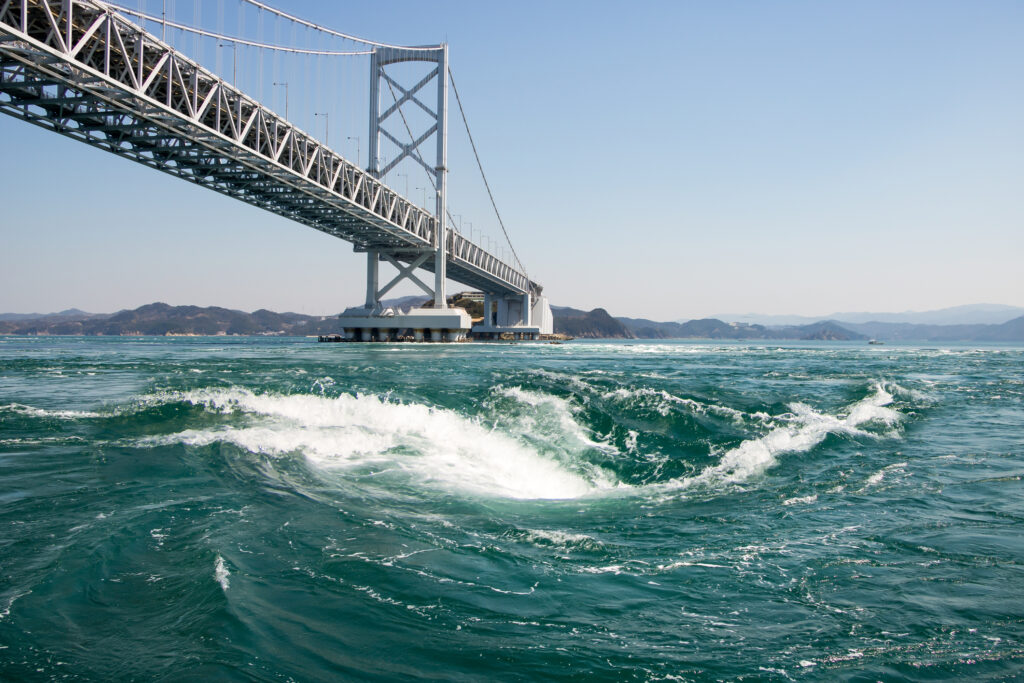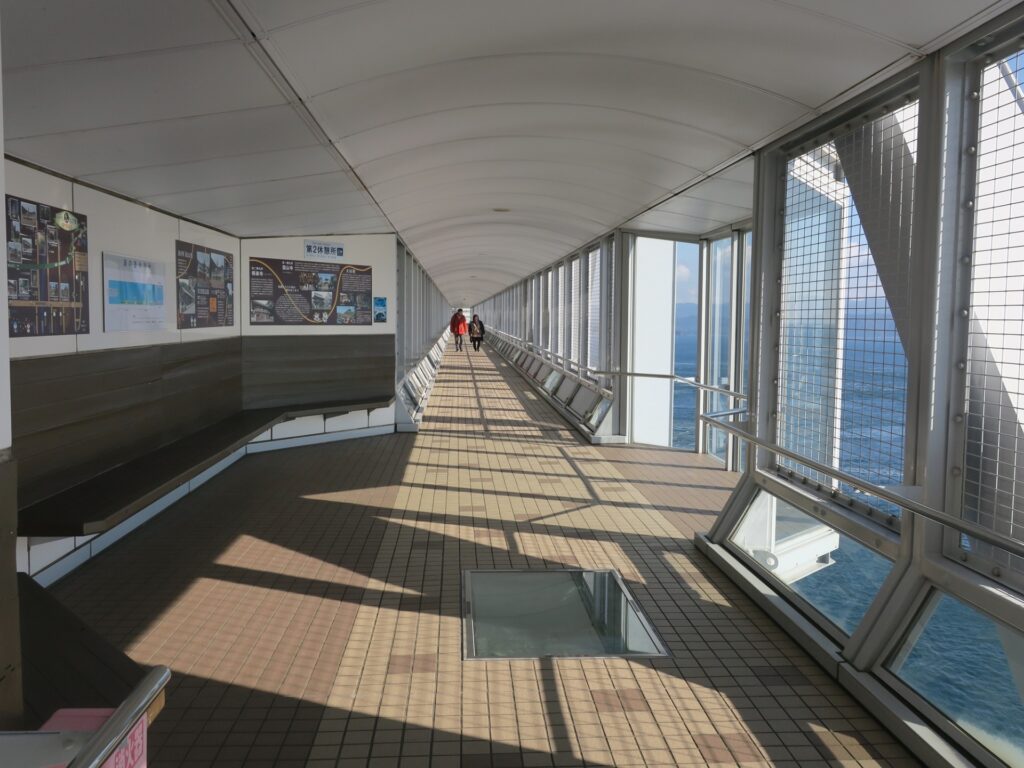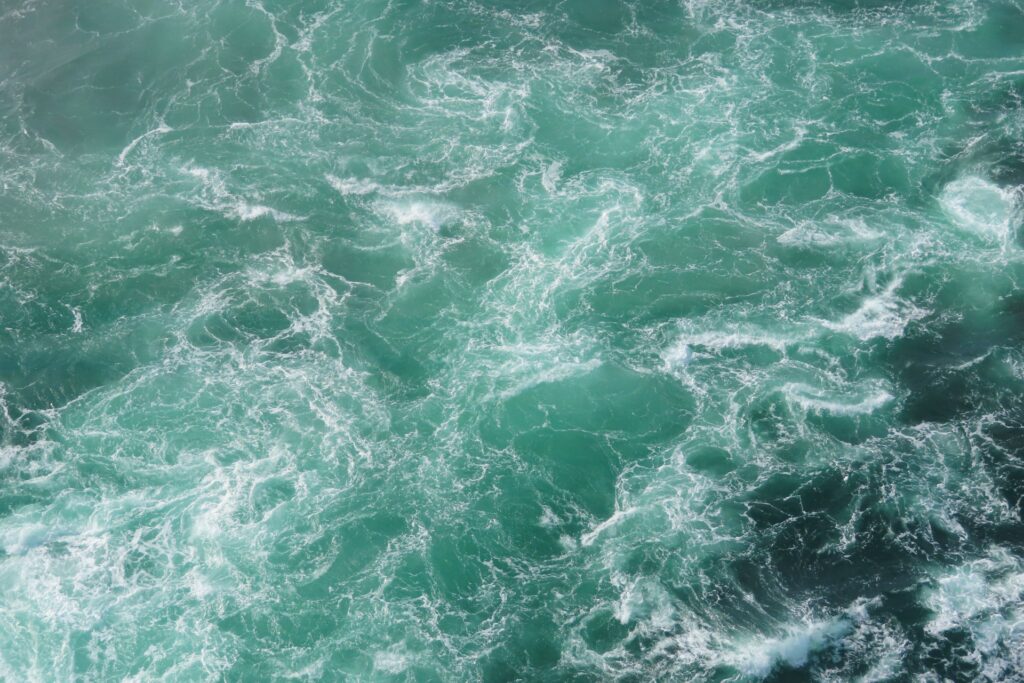From “What’s uzushio?” to living right beside it
Before I lived in Tokushima Prefecture, or knew anything about the area at all, I first heard about the Naruto whirlpools in an English conversation classroom in Fukuoka. One of my adult students told me about their trip to Naruto and put their language skills to the test describing the natural phenomenon, since neither of us immediately knew the English word for uzushio. After a few clarifying questions and some whiteboard doodles, the class added “whirlpool” to their vocabulary.

Having taught English across various parts of Japan for over six years, I still enjoy those little moments when students and I share a mutual “a-ha!” over a relatively rare word like that. But when the lesson was over, and I erased the swirling lines from the whiteboard, I couldn’t help but think: Why go all that way just to see some spinning water?
One coincidental job search later, I found myself moving from Fukuoka to Tokushima, my new home just a short trek from the very spinning waters that continue to draw visitors from across Japan and the world.
Since then, the Naruto whirlpools have become an occasional day-trip destination. I may not visit them often, but I’m always glad when I do.
Uzu no Michi: A bird’s-eye view of the whirlpools
There are two main ways to get a good look at the whirlpools: a sightseeing boat tour (which I haven’t tried yet) and my current favorite, Uzu no Michi. Meaning “whirlpool road,” Uzu no Michi is an enclosed walkway built on the underside of the Onaruto Bridge. From there, you can safely observe the whirlpools from about 45 meters up—all for a ticket price of 510 yen per adult.
The Onaruto Bridge is an important highway connecting Tokushima to Awaji-shima, the first leg of the journey from Shikoku to Japan’s mainland via Kobe. Shortly after the bridge opened to traffic, plans were made to construct a railway line beneath the highway, but they were never fully realized. Conveniently, the section already built for the railway sits directly above the iconic whirlpools and was later converted into a walkway for visitors to enjoy the view. Opened in spring 2000, Uzu no Michi recently marked its 25th anniversary.

History, sea air, and glass floors
The stroll down the 450-meter corridor of Uzu no Michi features a PA system that shares various facts in Japanese, English, and Chinese. German visitors might also be interested in the displays near the entrance, which chronicle Naruto and Tokushima’s historical ties with Germany.
The area was once home to a POW camp for captured German soldiers during the First World War, but interestingly, the camp is remembered not only for confinement, but also for cultural exchange. It was there that a band formed by the prisoners played Beethoven’s 9th Symphony for a Japanese audience, widely considered the first-ever performance of the masterpiece in East Asia. There are no translations for these displays, however, so it’s a great chance to practice your Japanese reading!
Despite the enclosed space and the rumblings of trucks passing overhead, the walkway never feels claustrophobic or flimsy. Filled with plenty of light and fresh sea air, the experience is stimulating but never uneasy. At the end, you’ll reach the observation room, an area with large windows where you can see the whirlpools from the side of the bridge, and even through the floor!
Several thick-glass windows set beneath your feet offer a direct top-down view of the whirlpools churning below. You’re welcome to walk on them, but for added safety, jumping isn’t allowed.


Finding stillness in the infinite dance of power and peace
For me, this is where you get the most out of the natural spectacle of the uzushio. While there are plenty of detailed, science-y explanations, the whirlpools simply flow in endless circles, growing stronger or weaker depending on the tides.
Like many of my most memorable sightseeing experiences in Japan, the whirlpools evoke two seemingly contradictory feelings at once: the rush of energy from the currents and the peacefulness of longevity. If you visit Tokushima, you’ll notice the whirlpools pop up in language and iconography more than a few times—clearly, they’ve had a lasting impact on the local community for generations.
The striking shades of blue, webbed with swirling foam, offer a moment to get lost in the feeling of following a flow while standing still. And for me, somewhere between the moon’s gravity, the ceaseless highway traffic, and the everlasting eddies, I find space to reflect on the currents I’ve chosen to follow, with each move and memory I make.

Planning your visit
First thing to note for travelers: you can’t reach the Naruto whirlpools by shinkansen or even local trains, so plan to book a bus or possibly rent a car.
To make the most of your visit, check out the Uzu no Michi English website below, which is updated with a monthly calendar showing the best times to catch the whirlpools each day.
